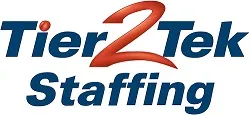Employee retention is a crucial component of building a successful business. High turnover rates can be costly and disruptive, making it essential for companies to invest in career development strategies that keep their best talent engaged and motivated. When employees see a clear path for growth and advancement, they are more likely to remain loyal and committed to the organization.
Employee retention is a critical factor in maintaining a successful business. High turnover rates can lead to increased costs, disrupted operations, and lost productivity. To keep top talent engaged and committed, companies must implement effective employee retention strategies that show employees they are valued and have opportunities to grow within the organization.
Develop Personalized Growth Plans
Creating personalized growth plans for employees is a great way to enhance employee retention. Sit down with each team member to discuss their career goals and aspirations. Tailor development plans that include targeted training and mentorship opportunities, helping them grow in areas they are passionate about. When employees see a clear path for advancement, they are more likely to stay and invest in the company’s future.
Continuous Learning for Strong Employee Retention
Offering opportunities for ongoing learning is another effective employee retention strategy. This can include workshops, seminars, or online courses to help employees sharpen their skills and stay updated with industry trends. Supporting their professional growth shows employees that you are invested in their success, leading to higher job satisfaction and loyalty.
Promote Internal Mobility
Encouraging internal mobility helps keep employees engaged by allowing them to explore new roles or responsibilities within the company. Promote job rotations or create internal job boards so employees can apply for new positions before looking externally. This strategy prevents stagnation and keeps employees motivated to build their careers within your organization.
Recognize Contributions to Enhance Employee Retention
Employees who feel appreciated and recognized are more likely to stay with your company long-term. Implement recognition programs that celebrate achievements, milestones, and day-to-day contributions. When employees see that their hard work is valued, it fosters a positive company culture and strengthens employee retention.
Offer Leadership Development Programs
Investing in leadership development programs can help you groom future leaders from within. Employees who see a clear path to leadership are less likely to leave for external roles. Provide management training, mentorship from senior leaders, and opportunities to lead projects. Offering leadership pathways is a powerful way to enhance employee retention and build a pipeline of future leaders.
Partner with Tier2Tek to Build and Retain Your Team
Successful employee retention starts with hiring the right talent. At Tier2Tek Staffing, we help companies find employees who align with their values and goals. Contact us today to see how our staffing solutions can support your retention strategies and help you build a strong, committed team.
